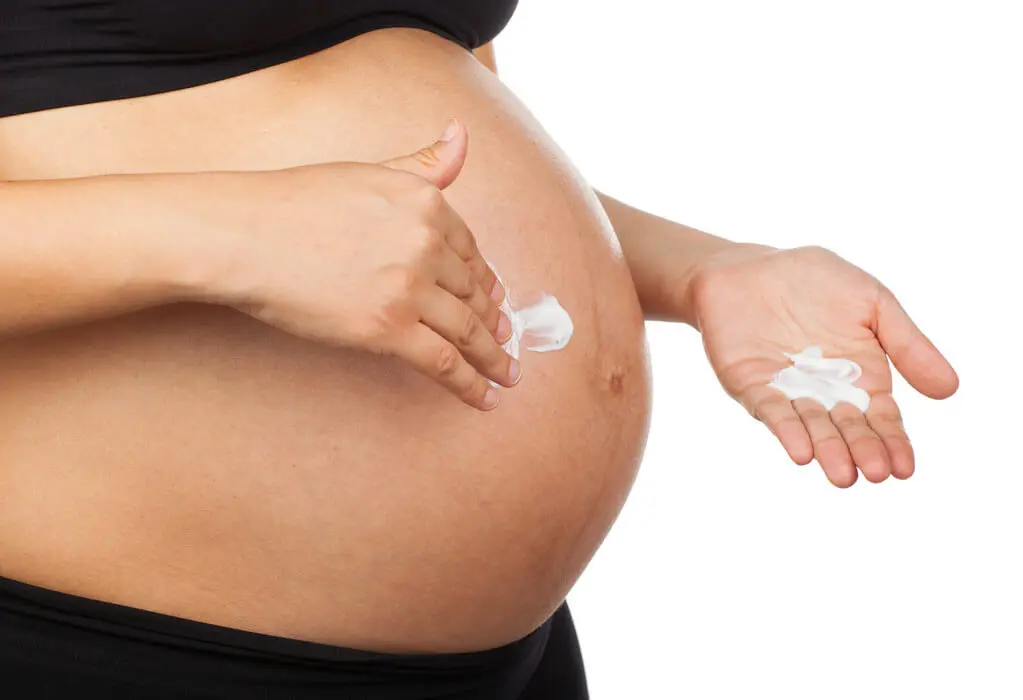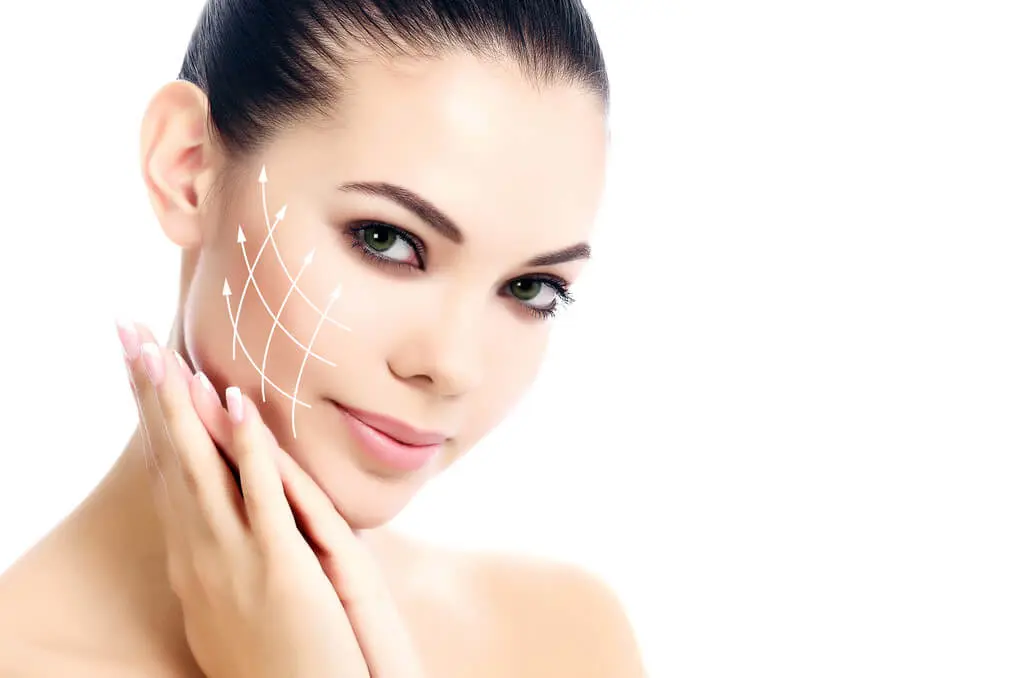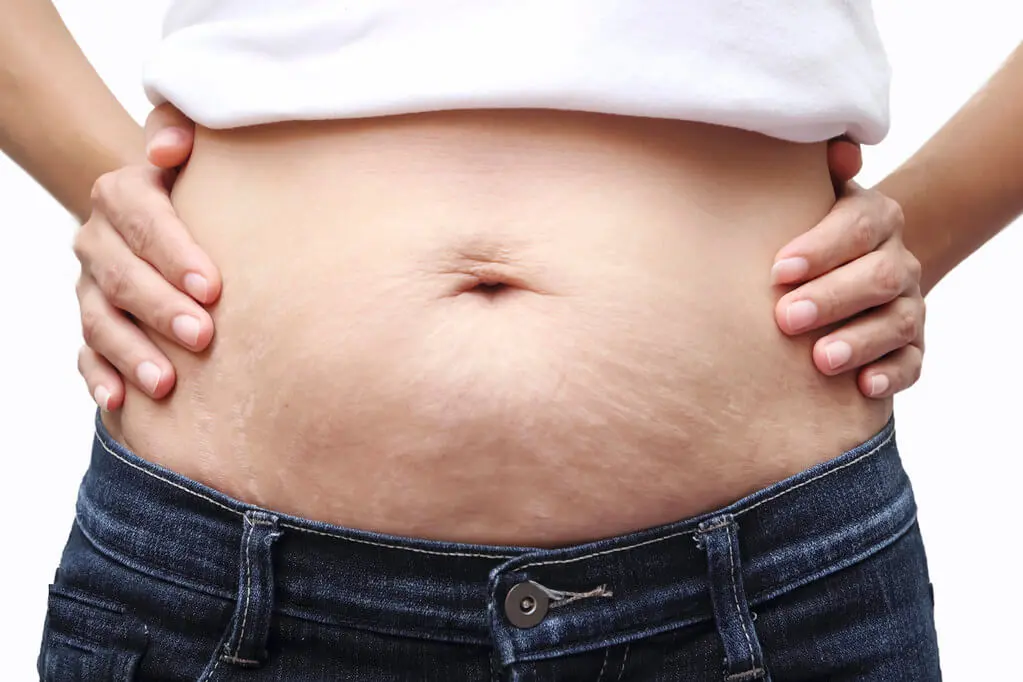What are Stretch Marks?
Stretch marks, medically known as striae, are a common skin concern experienced by many women during and after pregnancy. These reddish, pinkish, or purplish lines that appear on the skin occur due to the rapid stretching and expansion of the skin during pregnancy or periods of rapid weight gain.
Stretch marks typically occur on the abdomen, breasts, thighs, and buttocks and can vary in size and severity. They are caused by the breakdown of collagen, a protein responsible for keeping the skin elastic and resilient.
While stretch marks are generally harmless and do not pose any health risks, they can be a source of self-consciousness for many women. Fortunately, there are various solutions available to help restore the skin’s appearance and improve the confidence of new moms.
Common Causes of Stretch Marks
One common cause of stretch marks is rapid weight gain. During pregnancy, women may experience a significant increase in weight in a short period. The skin is forced to stretch to accommodate this weight gain, causing the underlying collagen and elastin fibers to break, resulting in stretch marks.
Hormonal changes also contribute to the development of stretch marks. During pregnancy, the body produces hormones that affect the connective tissue in the skin. This hormone imbalance weakens the skin’s elasticity, making it more prone to developing stretch marks.
The stretching and shrinking of the skin play a crucial role in the appearance of stretch marks. When the skin is rapidly stretched, the middle layer of the skin, known as the dermis, is damaged. As the skin returns to its normal state, the damaged dermis leads to the formation of stretch marks.
Understanding the common causes of stretch marks, such as rapid weight gain, hormonal changes, and the stretching and shrinking of the skin, can help individuals take preventive measures and explore treatment options to minimize the appearance of these marks.
Types of Stretch Marks
Stretch marks come in various types, each with its unique characteristics and appearances. The two main types of stretch marks are known as striae gravidarum and striae distensae.
Striae gravidarum, commonly called pregnancy stretch marks, occur during pregnancy due to the rapid stretching of the skin and hormonal changes. They typically appear as long, thin streaks that are pink, red, or purple in color. These stretch marks commonly develop on the abdomen, breasts, hips, thighs, and buttocks.
Striae distensae, on the other hand, can develop in both men and women and are not exclusive to pregnancy. They can occur as a result of rapid weight gain, growth spurts during adolescence, or due to certain medical conditions. Striae distensae are characterized by thin, depressed streaks on the skin’s surface, usually with a lighter hue than the surrounding skin.

Understanding the types of stretch marks is important for effectively addressing and treating them. By identifying the specific type of stretch mark, you can choose the most appropriate treatment option and take steps to restore the skin’s appearance and elasticity.
Striae Gravidarum (Pregnancy Stretch Marks)
Pregnancy stretch marks happen when the skin stretches quickly during pregnancy. They form in the second layer of the skin due to hormonal changes and increased cortisone levels.
Initially, striae gravidarum appear as dark and stark streaks on the skin immediately after pregnancy. They are usually pink, red, or purple in color and have a textured appearance. Over time, these stretch marks tend to fade and become less noticeable, often taking on a lighter hue than the surrounding skin.

Striae gravidarum commonly develop on areas of the body that experience the most stretching during pregnancy. These areas include the abdomen, breasts, hips, thighs, and buttocks.
It is important to note that while striae gravidarum may fade with time, they may not completely disappear. However, there are various treatment options available to help improve their appearance such as stretch mark creams, laser therapy, and light therapy.
Additionally, maintaining a healthy diet, staying hydrated, and keeping the skin moisturized can also contribute to reducing the appearance of pregnancy stretch marks.
Postpartum Stretch Marks
Postpartum stretch marks are a common occurrence for many women after childbirth. These marks are caused by the stretching and tearing of the skin’s middle layer, the dermis, as a result of rapid weight gain during pregnancy.
Postpartum stretch marks often appear as pink, red, or purple streaks on the skin’s surface and have a textured or indented appearance. Over time, they may fade to a lighter color and become less noticeable, but they rarely disappear completely on their own.
Treatment options for postpartum stretch marks include topical creams and lotions that help to improve the appearance of the skin by promoting collagen production and increasing skin elasticity. Laser therapy and light therapy are also effective methods for reducing the appearance of stretch marks by stimulating collagen production and improving the overall texture and tone of the skin.

It’s important to note that postpartum stretch marks can differ from other types of stretch marks, such as those caused by rapid weight gain or growth spurts. Postpartum stretch marks specifically occur after childbirth and are often localized to the abdomen, breasts, hips, thighs, and buttocks.
Prevention strategies can be employed during pregnancy to minimize the development of postpartum stretch marks. These include maintaining a stable weight, engaging in regular exercise to promote skin elasticity, and keeping the skin hydrated with a balanced diet and plenty of water. Using creams or oils rich in natural ingredients like centella asiatica can also help to improve skin elasticity and minimize the risk of stretch marks.
Postpartum stretch marks are a common concern for women after childbirth. Understanding the causes and appearance of these marks can help individuals explore effective treatment options and employ prevention strategies to restore the skin’s texture and tone.
Other Types of Stretch Marks
Other types of stretch marks can occur on different parts of the body and are not limited to postpartum stretch marks. These marks can develop during various life phases or due to different reasons, each with their own distinct characteristics.
For instance, stretch marks caused by rapid weight gain or growth spurts can appear on areas such as the abdomen, thighs, buttocks, and arms. These stretch marks typically start off as pink or reddish streaks and may become lighter in color over time, but they may still retain a textured or indented appearance.
In addition to weight gain and growth spurts, other factors such as genetic predisposition and hormonal changes can contribute to the development of stretch marks. These marks can vary in color, ranging from pink to purple or even silver or white, and can occur on several areas of the body, including the breasts, hips, and lower back.
It’s worth noting that stretch marks can also develop due to the use of certain medications or medical treatments, such as corticosteroids or long-term use of topical steroids. These stretch marks, known as striae distensae, may appear on different parts of the body and have similar characteristics to other types of stretch marks.
Overall, understanding the different types of stretch marks and their characteristics can help individuals identify the best treatment options to address their specific needs and concerns.
Prevention Strategies
Stretch marks are a common concern for many women after pregnancy. However, there are various prevention strategies that can help restore the skin’s appearance and promote collagen production for improved elasticity.
Firstly, maintaining a balanced and healthy diet rich in nutrients and vitamins can contribute to skin health. Drinking plenty of water is also important for keeping the skin hydrated.
Additionally, ensuring a stable weight gain during pregnancy and avoiding rapid weight fluctuations can help minimize the risk of stretch marks.

Regularly moisturizing the skin using creams or oils can help keep it smooth and soft. Light therapy treatments, such as laser therapy, can also be effective in reducing the appearance of existing stretch marks and promoting skin regeneration.
Lastly, embracing natural ingredients like centella asiatica in skincare products can support the healing process and enhance the overall texture and tone of the skin.
By following these prevention strategies, you can restore your skin’s health and regain your confidence after pregnancy.
Maintaining a Healthy Diet and Weight Gain
Maintaining a healthy diet during and after pregnancy plays a crucial role in promoting skin health and minimizing the appearance of stretch marks. A balanced diet rich in essential nutrients is essential for adequate collagen production and skin firmness.
Vitamins, proteins, and healthy fats are particularly beneficial for skin health. Vitamin C, found in citrus fruits, stimulates collagen production, helping to improve skin elasticity. Protein-rich foods like lean meats and legumes provide amino acids needed for collagen synthesis. Additionally, consuming healthy fats such as avocados and nuts can enhance skin hydration and flexibility.

Specific foods have been shown to support skin health. Bone broth, for example, is rich in collagen and can help improve the skin’s appearance. Citrus fruits, besides being a good source of vitamin C, also contain antioxidants that promote a healthy complexion. Including leafy greens in your diet provides vital nutrients such as vitamins A and E, which contribute to overall skin health.
Furthermore, maintaining a healthy weight gain during pregnancy can significantly impact the prevention of stretch marks. Rapid weight gain can strain the skin, leading to the formation of stretch marks. It’s important to aim for a stable weight gain within the recommended range for your individual circumstances.
A healthy diet rich in vitamins, proteins, and fats is essential for maintaining optimal skin health during and after pregnancy. By consuming nutrient-dense foods and ensuring healthy weight gain, you can support collagen production and prevent the appearance of stretch marks.
Remember to consult with a healthcare professional for personalized advice on maintaining a healthy pregnancy diet.
*Hey there! Are you struggling to lose weight no matter how much you diet or exercise? Turns out it’s not your fault. One common factor in overweight men and women is low inner body temperature. Your inner body temperature is the temperature of your internal organs and cells which plays a role in how your body metabolizes fat.
So, what’s the fix? Try Alpilean – it’s unlike anything you’ve tried before. It contains nutrients and plants that target and optimize low body temperature, a new cause of unexplained weight gain. To find out more, click the link below.
https://182b7dmkxcr7vnqxtdsht6tv6x.hop.clickbank.net
As a ClickBank Affiliate, I receive a small commission at no cost to you, if you proceed to make a purchase.
Keeping Skin Well Hydrated and Moisturized
After pregnancy, it is crucial to keep the skin well hydrated and moisturized to promote its elasticity, brightness, and overall health. Adequate moisture not only aids in the healing process of stretch marks but also helps to prevent dryness and flakiness.
One effective ingredient for skin hydration is hyaluronic acid. This powerful humectant has the ability to hold up to 1000 times its weight in water, offering intense hydration and plumping effects. Incorporating products with hyaluronic acid into your skincare routine can replenish moisture levels, improving the appearance of postpartum stretch marks.

However, it is important to exercise caution when using certain ingredients, especially if you are breastfeeding. Retinoids, such as tretinoin, should be avoided during this time to ensure the safety of both mother and baby. Instead, look for natural ingredients like Centella asiatica, which have been known to promote skin healing without any harmful effects.
In addition to topical solutions, it is also beneficial to practice relaxation techniques to reduce stress levels. Stress can negatively impact the healing process of stretch marks and overall skin health. Laying back, listening to calming music, or practicing meditation can help promote a sense of calmness, allowing the body to naturally heal and repair.
Using Sunscreen Regularly to Protect Skin from UV Rays
Using sunscreen regularly is essential to protect your skin from the harmful effects of UV rays. UV rays can damage the skin and contribute to the appearance of stretch marks, especially during and after pregnancy. Sunscreen forms a protective barrier on the skin, shielding it from the sun’s harmful rays and preventing them from penetrating the deeper layers of the skin.
UV rays can break down collagen and elastin fibers in the skin, leading to a loss of skin elasticity and the formation of stretch marks. By applying sunscreen with a high SPF, you can minimize the damage caused by UV rays and reduce the risk of stretch marks developing.

To ensure adequate protection, it is important to apply sunscreen generously and evenly to all exposed areas of the body, including the abdomen, breasts, and thighs. Look for a broad-spectrum sunscreen with SPF 30 or higher, as this will provide protection against both UVA and UVB rays. Remember to reapply sunscreen every two hours, especially if you are sweating or swimming.
Incorporating sunscreen into your daily skincare routine is crucial for maintaining the health and appearance of your skin, particularly during and after pregnancy. By protecting your skin from UV rays, you can help prevent the formation of stretch marks and promote overall skin health.
Treatments for Existing Stretch Marks
While preventing stretch marks during pregnancy is ideal, it’s not always possible. Fortunately, there are various treatments available to help reduce the appearance of existing stretch marks and restore your skin’s health and texture.
From topical creams to advanced medical procedures, these treatments can target stretch marks and promote collagen production, ultimately helping to improve skin elasticity and tone.
Non-Surgical Treatments
Pregnancy is a beautiful journey, but it can leave behind an unwelcome souvenir, stretch marks. These marks, caused by rapid weight gain and changes in skin elasticity, affect many new mothers. Fortunately, there are non-surgical treatments available to restore your skin’s appearance and boost your confidence.
One effective option is radiofrequency treatment, which uses controlled energy to tighten loose skin and stimulate collagen production. The heat from the radiofrequency device targets the deeper layers of your skin, encouraging the production of new collagen fibers. Over time, this can improve the overall appearance of stretch marks.
Intense pulsed light treatment, or IPL, is another non-surgical solution. This therapy targets the red and brown pigment in stretch marks, helping to fade their appearance. IPL works by delivering intense pulses of light to the affected areas, promoting the natural healing process of your skin.
For those looking for an all-encompassing solution, laser skin tightening treatment may be the answer. This treatment combines the benefits of radiofrequency and IPL, aiding in the tightening of loose skin while minimizing the appearance of stretch marks. Laser therapy stimulates collagen production, resulting in smoother skin tone and texture.

It’s important to note that multiple sessions may be required, and results may appear gradually over several months. To optimize the outcome of these non-surgical treatments, maintaining a balanced diet, staying hydrated, and maintaining a stable weight are crucial.
Say goodbye to postpartum stretch marks and embrace your bundle of joy with confidence. Non-surgical treatments offer a safe and effective way to restore your skin after pregnancy, leaving it smooth, soft, and stretch mark-free.
In Conclusion
Stretch marks are a common occurrence in new mothers, but they don’t have to be permanent. By incorporating sunscreen into your daily skincare routine and seeking out non-surgical treatments such as radiofrequency, IPL, and laser skin tightening therapy, you can restore your skin after pregnancy and minimize the appearance of stretch marks.
With patience and dedication to your skincare routine, you can regain your confidence and proudly show off your postpartum body.





